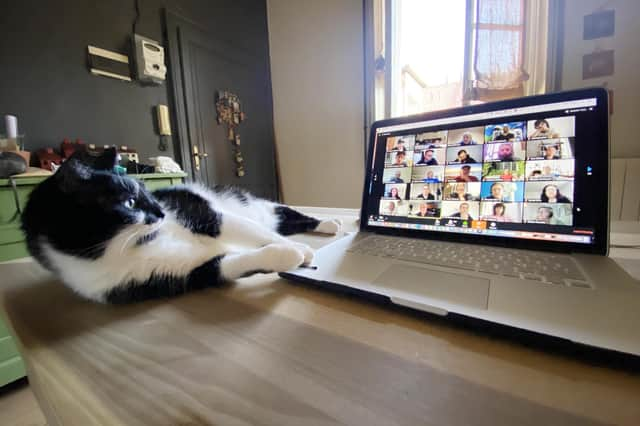Video conferencing: How to navigate Zoom, Teams and the like without becoming 20 per cent more boring – Gavin Brown


Apparently a fool learns from their own mistakes while a wise person learns from the mistakes of others.
Well, in the two years since applications like Zoom and Teams arrived suddenly into our lives, too many people have failed to learn from their own mistakes, which is probably down to a lack of training, feedback and analysis.
Advertisement
Hide AdAdvertisement
Hide AdWhatever the reason, many of us will want to get better at presenting virtually as it will play a part in business for some time to come. Here are a few simple steps everyone can take to up their game.
You’ve heard of “owning the room” in a regular presentation. Online you need to “own the screen”.
Go online ahead of the meeting and take a screenshot. Examine your appearance. Are you in the centre of the screen? Have you positioned yourself so that you are neither too small, nor too imposing? And have you got the most flattering angle?
For the last question, this means making sure your eye level is the same height as your camera. Most people end up with the camera being too low – use anything you can (a box, some books) to fix this.
One trick that’s a must for Zoom is injecting more variation into your voice – what I call adding VAT to your delivery. Most of us sound about 20 per cent more boring when we speak online. This needs to be added back if we are going to make an impact.
A golden rule of speaking to other people is eye contact, and this matters on Zoom too. But if you’re talking to someone and looking at them on your screen, what they see is you looking down furtively. Instead, you need to look straight into your device camera, usually placed at the top of your screen.
Anyone who’s made presentations knows about the perils of slides. Cut the amount of information on each slide compared to a regular presentation. This makes the information easier to absorb and it means you change slides more regularly, creating a feeling of momentum.
Finishing on time is even more essential online than it is in person. If you go beyond your advertised finish time, prepare for a digital exodus. A lot of people book ‘back-to-back meetings’ online so there is virtually no buffer available to you. You will see the participant numbers drop in real time, and your audience will see it too.
Advertisement
Hide AdAdvertisement
Hide AdIn a packed conference room or meeting, interaction with an audience can happen naturally. This is less likely to happen on Zoom.
That’s why use of the “chat box” or applications which allow voting and feedback can be helpful to you and make them feel engaged. Plan the engagement clearly in advance and follow the plan.
If we can get to grips with virtual and hybrid presentations, many opportunities wait for us. We can continue to reach wider audiences than we could in the past.
But if we keep making the same Zoom mistakes then, as my teacher would say, we are not even reaching the level of fools.
Gavin Brown is director of Speak With Impact and a former Lothians MSP
Comments
Want to join the conversation? Please or to comment on this article.
